From the December 2022 issue of Apollo. Preview and subscribe here.
You have to wait if you want to have a decent look at the head and shoulders of Henry VIII, as depicted by Holbein in a picture on loan from the Thyssen-Bornemisza in Madrid, or at the opulent Hampden Portrait of Elizabeth I, one of the first of her reign. The galleries devoted to ‘The Tudors: Art and Majesty in Renaissance England’ are crowded. The Met clearly thinks that this is just the beginning. Provisions have been made for a queue outside the galleries, should their capacity ever be exceeded.
One thing that is clear from overhearing snippets of conversation is that the audience is extremely familiar with ‘the Tudor story’. Henry VIII and Anne Boleyn, Edward VI and Mary I, Mary Queen of Scots and Elizabeth I; all are as well known to these exhibition-goers as they would be to visitors at an equivalent exhibition across the pond. This is an extension of a wider cultural phenomenon, with the Met’s exhibition standing alongside Showtime’s The Tudors and the late Hilary Mantel’s Wolf Hall – which recently ran on Broadway – as proof that in the United States, as in the UK, anything involving the Tudors is almost guaranteed to be a hit.
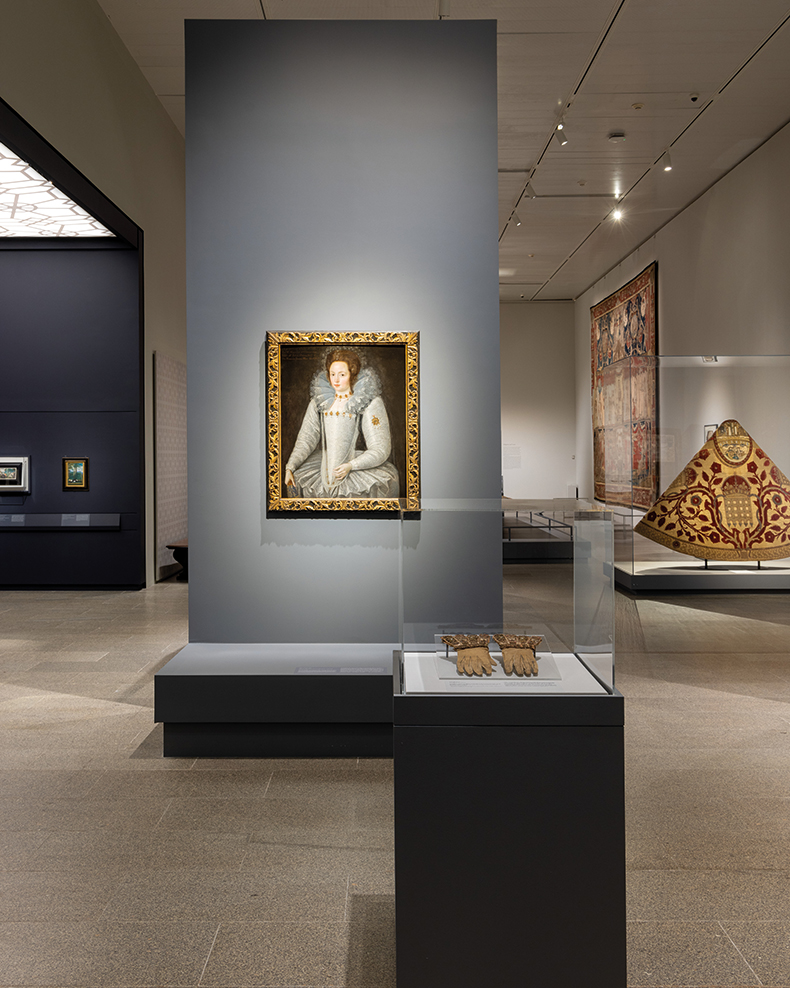
Installation view showing a portrait of the heiress Ellen Maurice of 1597 by Marcus Gheeraerts the Younger; in front, a pair of leather and satin gloves from c. 1600; to the right is a cope made for Henry Vii in 1499–1505. Photo: Anna-Marie Kellen; courtey the Metropolitan Museum of Art
So, what is it about the Tudors? One quality that surely appeals is the outsized personalities of the era’s chief figures and the struggles between them. To talk of the Tudor Age is to conjure a period in which fundamental principles – of politics, religion, love – were argued over by men and women who were prepared to die for them. It is also to speak of an age of dualities: a man’s world in which women often ruled; a time of sublime poetry, but also of extreme violence; a world that prized interiority, but also courtly display.
This was, of course, a Europe-wide phenomenon. But there are too many Habsburgs, too many electors of Germany, too many papal families ever to tell the story of 16th-century Europe with the same clarity as can be told with the Tudors. And there is something in their very earthiness that throws some of the era’s seemingly more distant concerns into sharper relief. A contemporary audience may have a hard time grasping the finer points of the theology underpinning Martin Luther’s 95 Theses; less so Henry VIII’s desire to divorce his wife for his canny younger lover.
The Tudors themselves were preoccupied with their image and its dissemination. This was in part the inheritance of a dynasty whose claim to the throne had been weak when it seized power in 1485. Artists from all over Europe travelled to England to exploit this new-found preoccupation with images, which filtered down from sovereign to court. Through a series of impressive loans, this exhibition includes some of their most accomplished efforts. From the first half-century of Tudor rule, we have two of the bronze angels intended by the Florentine sculptor Benedetto da Rovezzano for the tomb of Cardinal Wolsey. There is also his compatriot Pietro Torrigiano’s terracotta portrait bust of Bishop John Fisher, which is positioned suggestively in front of Hans Holbein the Younger’s brooding oil on panel of Sir Thomas More (a rare loan from the Frick). Often, knowledge of history imbues these portraits with a deep sense of melancholy. Both More and Fisher were killed for resisting the wishes of Henry VIII; Wolsey died almost at the point of meeting the same end.
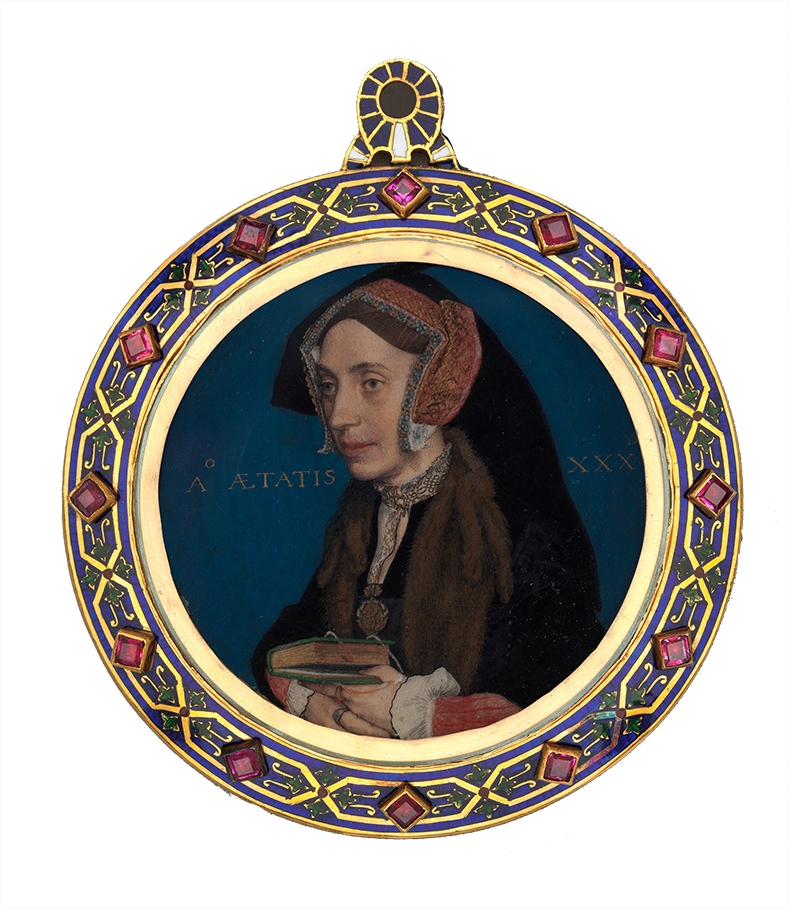
Margaret Roper (c. 1535), Hans Holbein. Metropolitan Museum of Art, New York
The brevity of life was a popular theme in the art of this period, and applied as much to kings as to courtiers. Holbein’s portrait of the infant Edward VI, babbling and strong, belies the reality of the sickly boy who died at the age of 15 . Sometimes, artists were commissioned by those whom the dead had left behind. One of the most sensitive portraits in the exhibition is Holbein’s miniature of More’s daughter Margaret Roper, painted around 1535 – the year of his execution. One of the most extraordinary, from the reign of Mary I, is Hans Eworth’s portrait of Mary Neville, Lady Dacre, whose husband – executed a decade and a half earlier – makes an eerie appearance in a portrait-within-a-portrait above her right shoulder.
This exhibition reminds us, however, that Tudor artists were not just portraitists, but artisans creating luxury objects of extreme material richness and sophistication. These objects were looked at and admired for their skill and ingenuity. Their importance to the men and women of the Tudor court is evidenced by an enormous parchment scroll recording the gifts Elizabeth I was given at the New Year of 1585. Few of these survive, but an impression is given by outstanding examples such as the Heneage Jewel, a masterpiece of metalwork by Nicholas Hilliard, probably in this case a gift given by queen to courtier. Not all of these objects are by named artists. Some, such as an amazingly well-preserved swatch of luscious Florentine cloth of gold, were made by artisans whose names do not come down to us at all, reminding us that names are not everything.
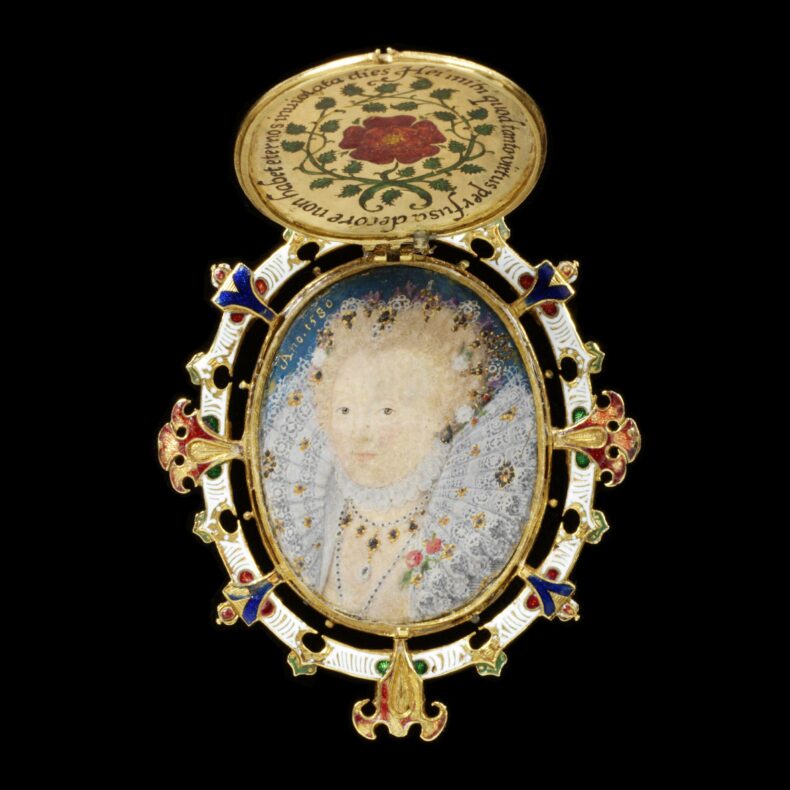
Heneage (or Armada Jewel) (c. 1595–1600), Nicholas Hilliard. Victoria and Albert Museum, London
If there’s one thing to be regretted, it is that the exhibition at times shies away from busting some of the myths of popular culture, and even plays up to them. We are told in the text at the start of the exhibition that before Tudor rule, England was an ‘impoverished backwater’ and thanks to it, it became ‘a major European power operating on a global stage’. Really? A century earlier, Humphrey, Duke of Gloucester, was in regular correspondence with leading European humanists, and his elder brother Henry V died the king of France. For the Tudors to have perfected Renaissance court culture in England, as this exhibition argues, they don’t need to have invented it.
In all other respects, however, this exhibition is, like its title, majestic. And it provides a clue as to why, more than half a millennium after the Tudors seized the English throne by force, they provide for many the defining image of Renaissance courtly splendour.
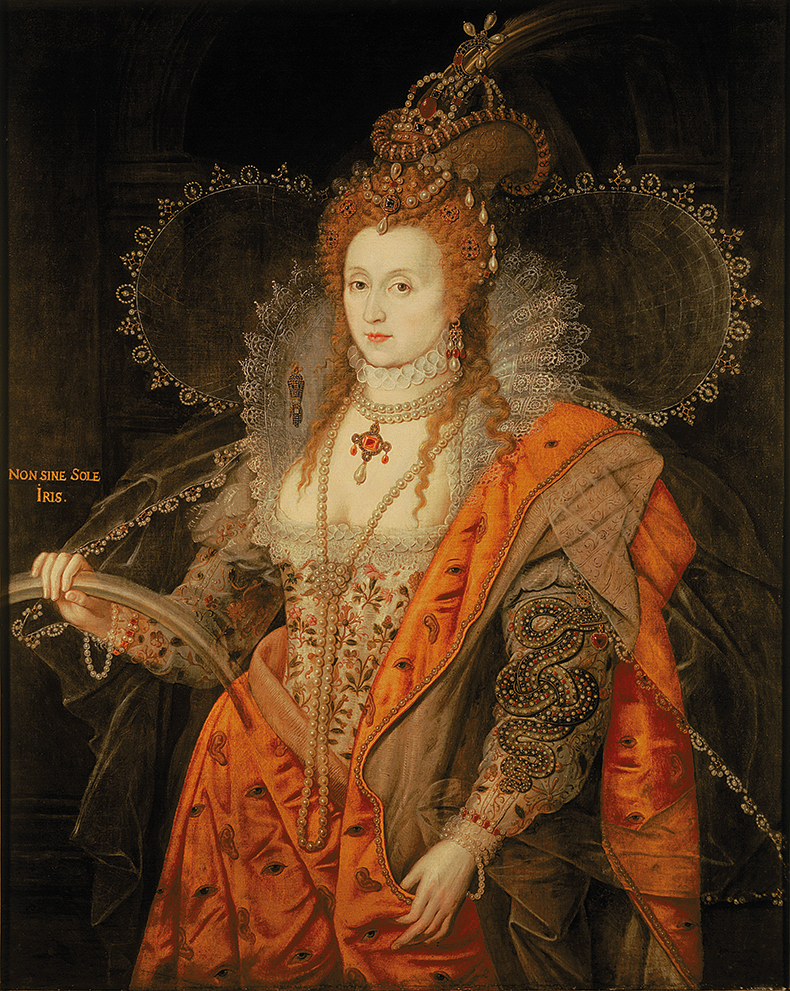
Elizabeth I (The Rainbow Portrait) (c. 1602), attrib. Marcus Gheeraerts the Younger. Hatfield House, Hertfordshire. Reproduced with the permission of the Marquess of Salisbury, Hatfield House; photo: © Hatfield House, Hertfordshire, UK/Bridgeman Images
‘The Tudors: Art and Majesty in Renaissance England’ is at the Metropolitan Museum of Art, New York until 8 January.
From the December 2022 issue of Apollo. Preview and subscribe here.


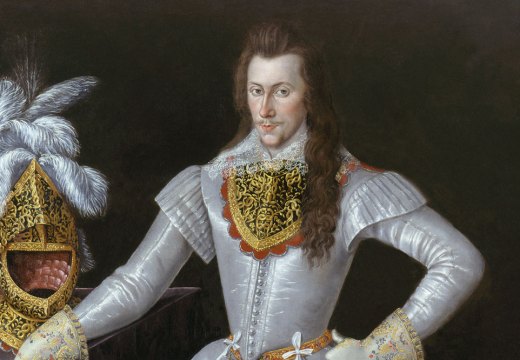

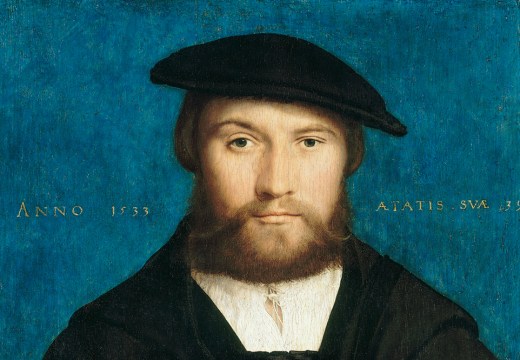









![Masterpiece [Re]discovery 2022. Photo: Ben Fisher Photography, courtesy of Masterpiece London](http://www.apollo-magazine.com/wp-content/uploads/2022/07/MPL2022_4263.jpg)
It’s time for the government of London to return to its rightful home